Can you compare with the caliber of .380 vs. 9mm for self-defense? COMPARE.EDU.VN offers a detailed breakdown, highlighting the strengths and weaknesses of each cartridge. This comprehensive comparison analyzes size, recoil, ballistics, and cost, providing the information needed to make an informed decision for personal protection, ultimately focusing on handgun options and ammo choices.
1. .380 vs. 9mm: Understanding The Key Differences
What are the primary differences between .380 ACP and 9mm ammunition? The 9mm cartridge is generally more powerful and offers higher capacity, while the .380 ACP is known for its lighter recoil and use in smaller, more concealable pistols. While their bullet diameters are similar, the 9mm typically has a higher velocity and energy, making it a popular choice for self-defense and law enforcement, according to research published in the Journal of Forensic Sciences.
- Size and Dimensions: The 9mm is a larger cartridge, with a longer case length (.754 inches vs. .680 inches for the .380 ACP) and overall length (1.169 inches vs. .984 inches). This larger size allows for a greater powder capacity, contributing to its increased power.
- Power and Velocity: 9mm rounds generally exhibit higher velocities and muzzle energy compared to .380 ACP rounds. This translates to greater stopping power and potentially better penetration in self-defense scenarios.
- Recoil: The .380 ACP typically produces less recoil than the 9mm, making it easier to control and potentially more accurate for some shooters, especially those with less experience or lower hand strength.
- Firearm Size and Concealability: Firearms chambered in .380 ACP are often smaller and lighter than those chambered in 9mm, making them easier to conceal and carry. This is a significant factor for individuals prioritizing discreet carry.
- Cost and Availability: 9mm ammunition is typically more affordable and widely available than .380 ACP ammunition. This can be a significant factor for individuals who practice frequently or are on a budget.
2. .380 vs. 9mm: A Detailed Comparison Chart
How do the .380 ACP and 9mm compare in terms of design, dimensions, and performance? This chart provides a detailed comparison of key characteristics, from their origins and designers to their ballistic performance and pressure ratings. Understanding these specifications is crucial for selecting the right ammunition for your needs.
| Feature | .380 ACP | 9mm Luger/Parabellum |
|---|---|---|
| Designer | John Browning | Georg Luger |
| Year Designed | 1908 | 1901 |
| Origin | United States | German Empire |
| Case Type | Rimless, Straight | Rimless, Tapered |
| Bullet Diameter | .355″ | .355″ |
| Neck Diameter | .373″ | .380″ |
| Base Diameter | .374″ | .391″ |
| Rim Diameter | .374″ | .392″ |
| Rim Thickness | .045″ | .050″ |
| Case Length | .680″ | .754″ |
| Overall Length | .984″ | 1.169″ |
| Max Pressure (PSI) | 21,500 | 35,000 |
| Common Bullet Weight | 88-99 grains | 115-147 grains |
| Velocity (Typical) | 800-1100 FPS | 1100-1400 FPS |
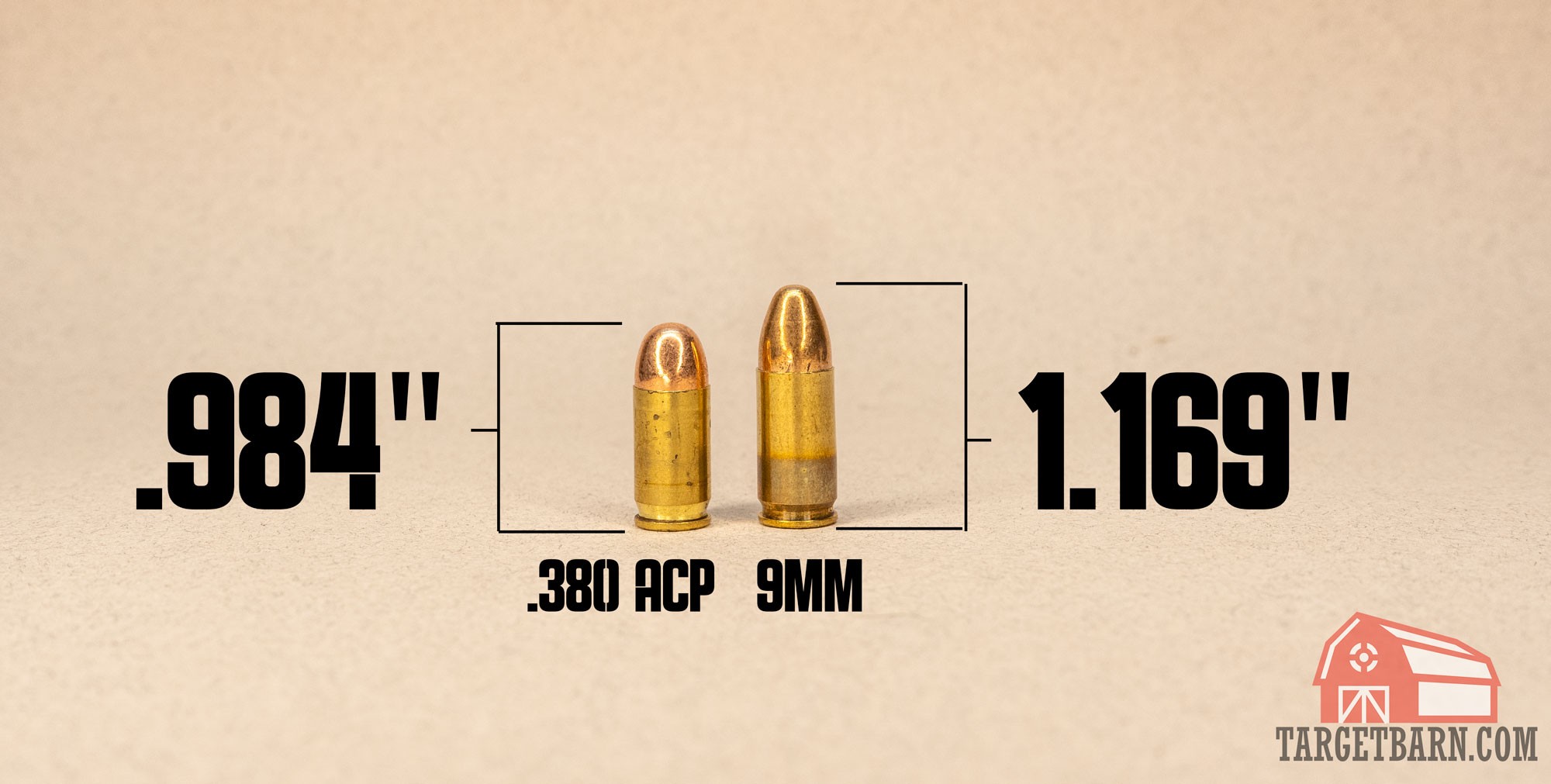
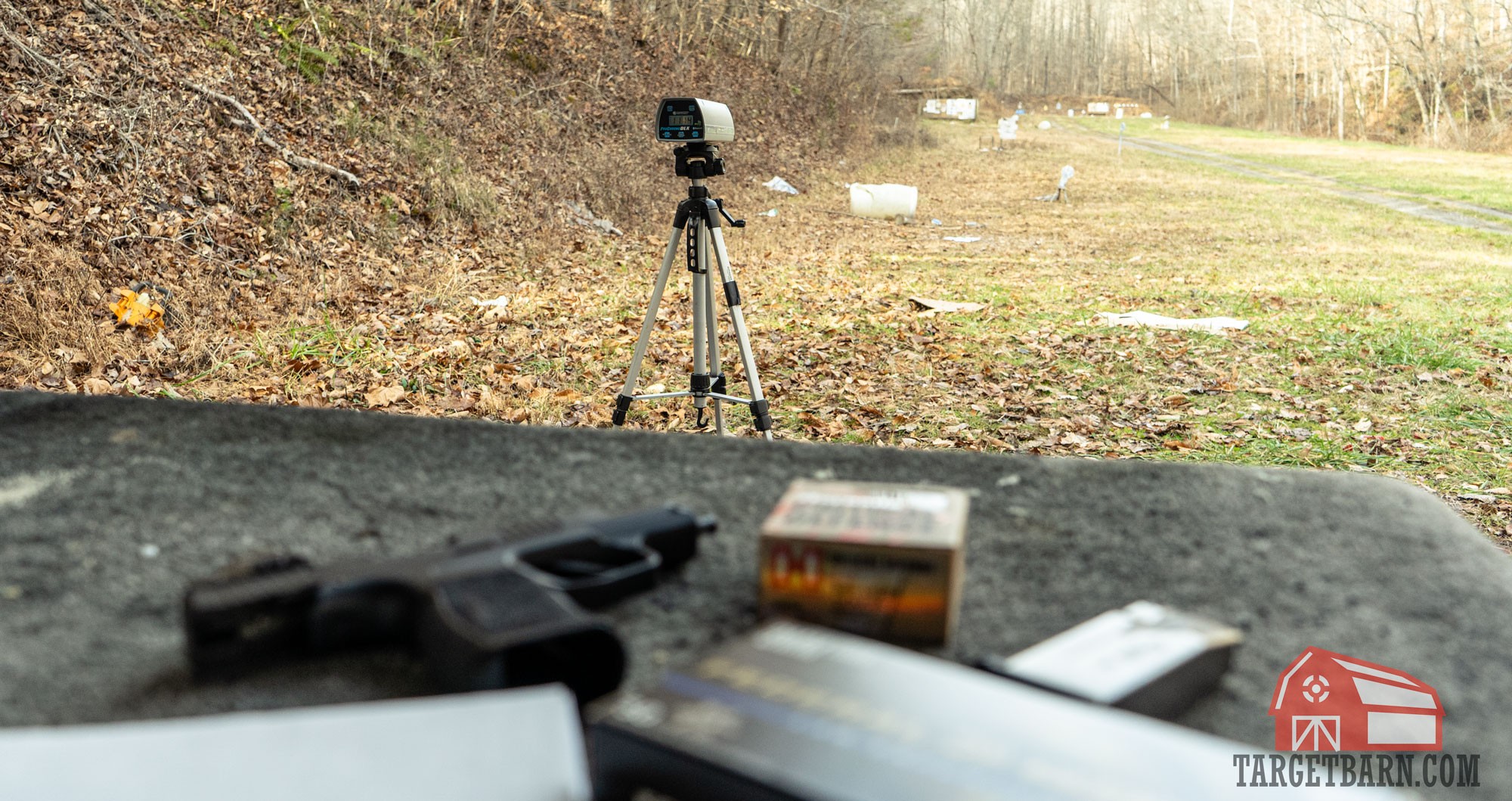
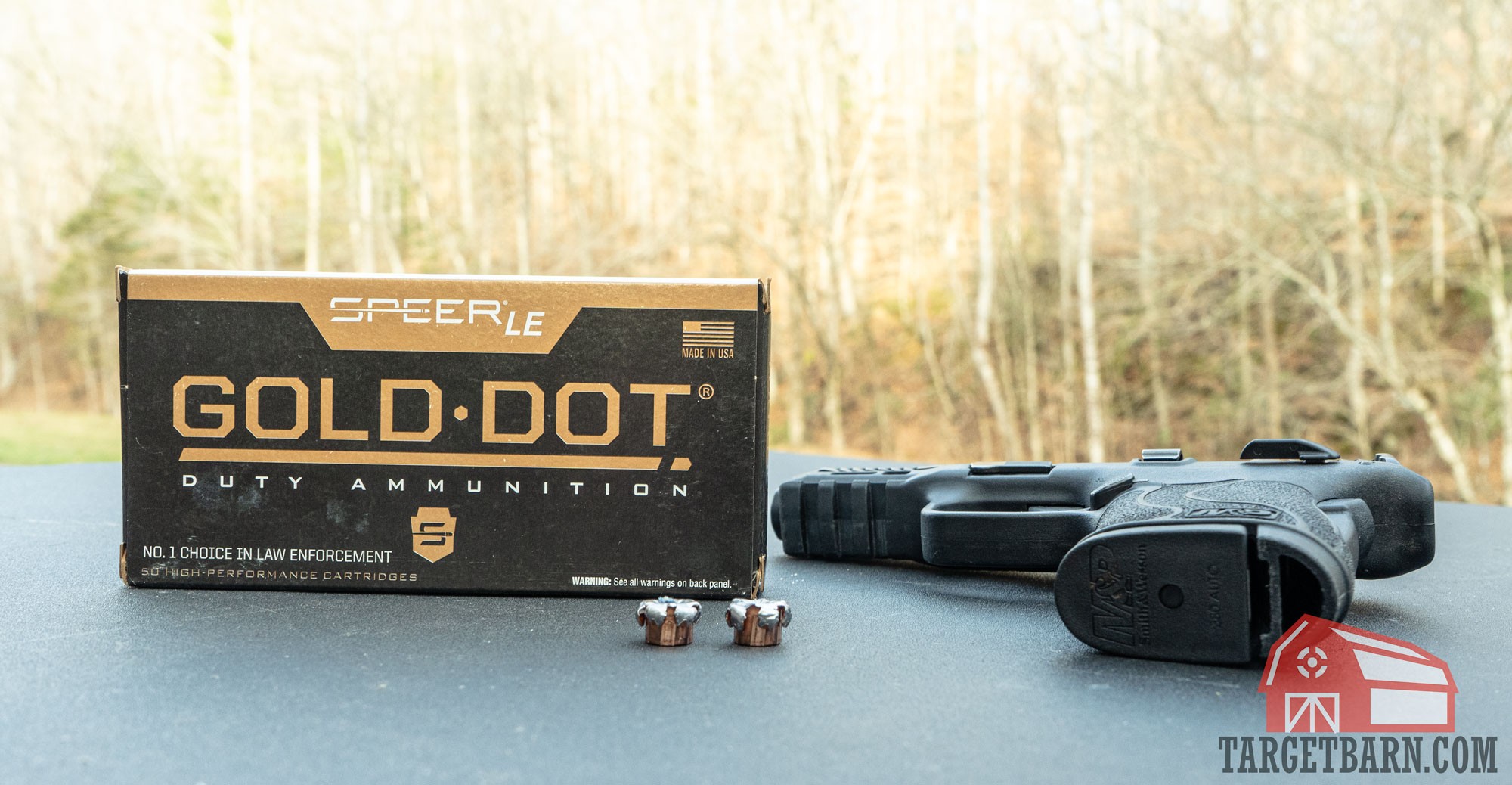
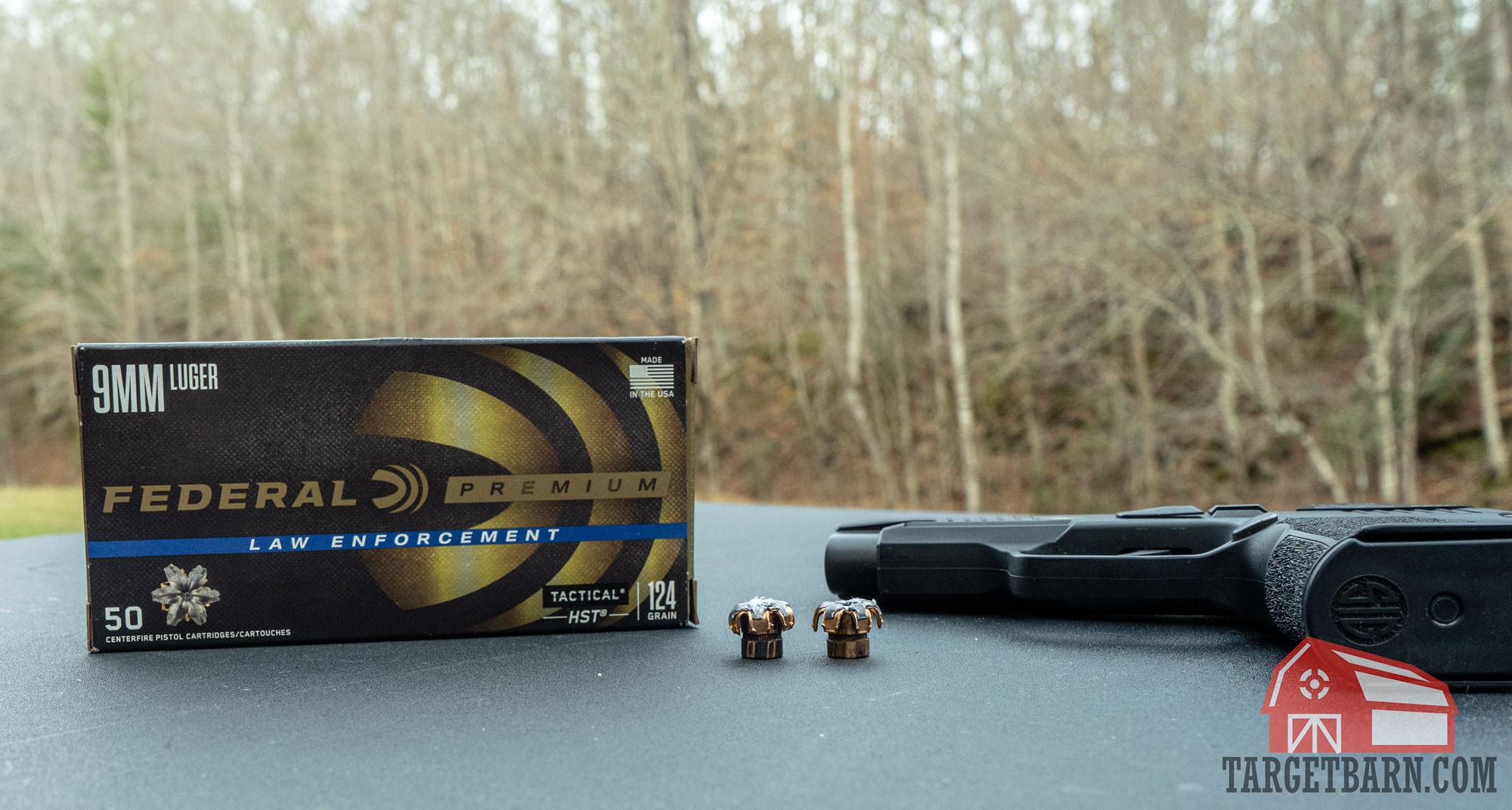
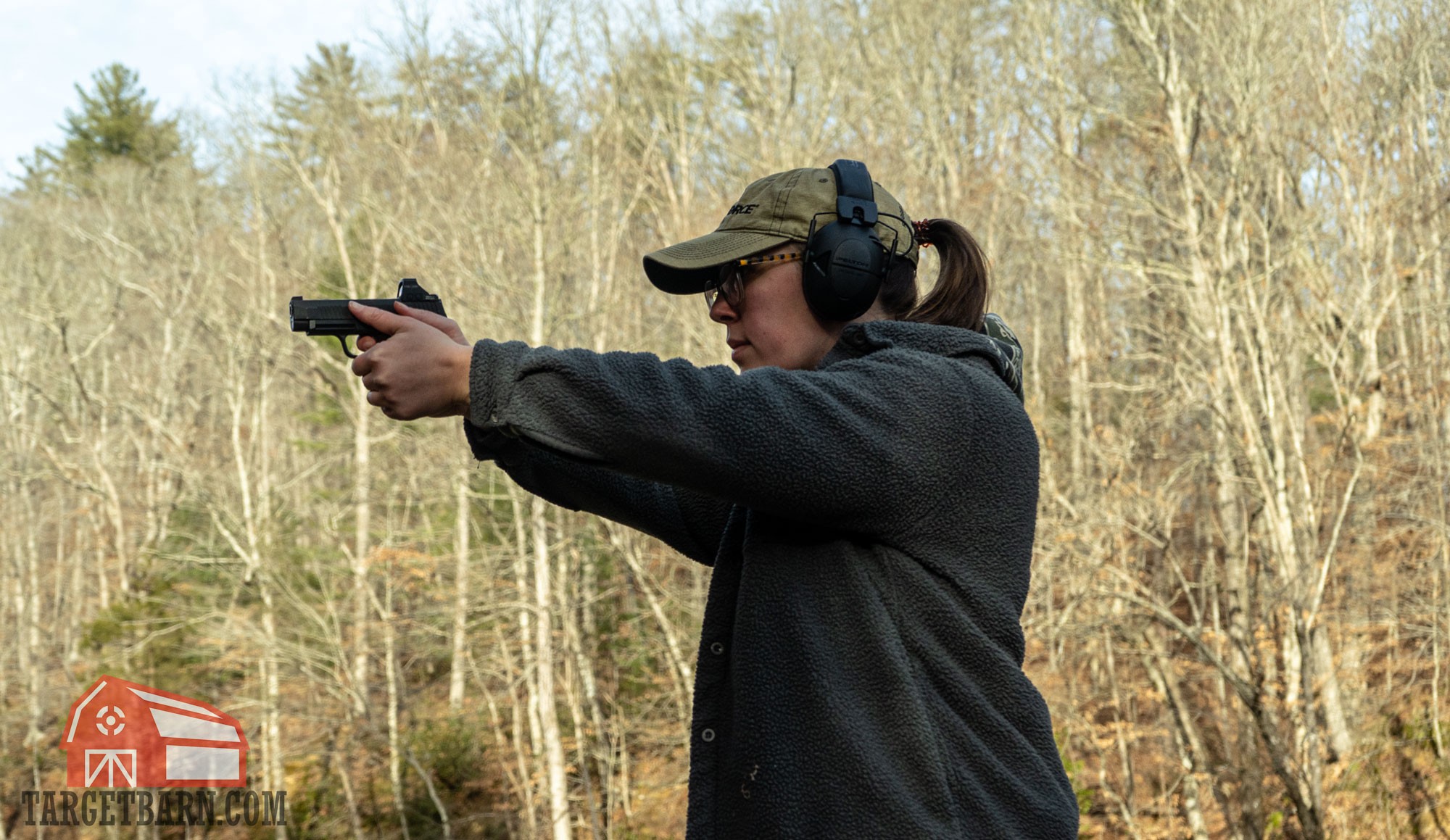
3. .380 vs. 9mm: Understanding Size and Concealability
How does the size difference between .380 and 9mm affect concealability? The compact dimensions of .380 ACP pistols make them a popular choice for concealed carry, offering a smaller profile and lighter weight compared to many 9mm handguns. However, advancements in firearm design have led to more compact 9mm options that rival the concealability of some .380 models.
3.1 Advantages of .380 ACP for Concealed Carry:
- Smaller Pistols: .380 ACP pistols are often significantly smaller than their 9mm counterparts. This reduced size makes them easier to conceal, especially for individuals with smaller frames or those who prefer to carry in unconventional locations.
- Lighter Weight: The lighter weight of .380 ACP pistols can be a significant advantage for all-day carry. A lighter firearm is less likely to cause discomfort or fatigue, making it more likely that individuals will consistently carry their weapon.
- Easier to Handle: The reduced recoil of the .380 ACP can make it easier to handle for some shooters, particularly those with less experience or lower hand strength. This can translate to improved accuracy and faster follow-up shots.
3.2 The Rise of Compact 9mm Pistols:
- Advancements in Design: Recent advancements in firearm design have led to the development of highly compact 9mm pistols that rival the size and weight of some .380 ACP models. These pistols offer the increased power of the 9mm cartridge in a package that is still relatively easy to conceal.
- Stack-and-a-Half Magazines: The introduction of stack-and-a-half magazines has allowed manufacturers to create 9mm pistols with surprisingly high capacities in a compact form factor. This gives shooters the advantage of increased firepower without sacrificing concealability.
- Ergonomics and Features: Many compact 9mm pistols are designed with ergonomics and features that enhance handling and shooting comfort. This can help mitigate the increased recoil of the 9mm cartridge and improve overall accuracy.
4. .380 vs. 9mm: Recoil Management and Handling
Which cartridge offers better recoil management, and how does this impact accuracy and follow-up shots? The .380 ACP generally produces less recoil, making it easier to control, especially for new shooters or those with weaker hand strength. However, proper technique and training can make the 9mm’s recoil manageable for most shooters, as demonstrated in studies by the National Shooting Sports Foundation.
4.1 Factors Influencing Recoil:
- Gun Weight: Heavier guns tend to absorb more recoil, reducing the amount felt by the shooter.
- Barrel Length: Longer barrels can help to reduce muzzle flip, which contributes to perceived recoil.
- Cartridge Loading: Different loads within the same caliber can produce varying levels of recoil.
- Shooter’s Strength and Skill: A shooter’s strength, technique, and experience level can all affect their ability to manage recoil.
4.2 Recoil Comparison:
- .380 ACP: Lighter recoil makes it easier to control, especially for new shooters. Allows for faster follow-up shots due to less muzzle climb. Can be a good option for individuals with hand strength limitations.
- 9mm: More recoil requires more practice to master. Proper grip and stance are crucial for recoil management. The increased recoil can be perceived as more intimidating for some shooters.
4.3 Mastering Recoil:
- Proper Grip: A firm, high grip is essential for controlling recoil.
- Stance: A balanced stance with a slight forward lean helps to absorb recoil.
- Practice: Regular practice is the key to mastering recoil management.
- Consider a Muzzle Brake: Muzzle brakes can help to redirect gases and reduce recoil, but they also increase noise and muzzle flash.
5. .380 vs. 9mm: Ballistics and Stopping Power
How do the ballistic performances of .380 and 9mm compare in a self-defense scenario? While the 9mm generally exhibits superior penetration and expansion in ballistic gel testing, the .380 ACP can still be effective with proper bullet selection and placement. The FBI’s ballistic protocols provide a standardized measure for evaluating ammunition performance.
5.1 Understanding Ballistic Gel Testing:
- FBI Protocol: The FBI’s ballistic testing protocol calls for a penetration depth between 12 and 18 inches in ballistic gel covered with four layers of fabric. This simulates the penetration required to reach vital organs in a human body.
- Bullet Expansion: Bullet expansion is also an important factor, as an expanded bullet creates a larger wound channel and prevents over-penetration.
- Muzzle Velocity and Energy: Muzzle velocity and energy are indicators of a bullet’s potential to inflict damage.
5.2 Ballistic Performance Comparison:
| Cartridge | 5-Shot Avg. Velocity (FPS) | Avg. Penetration (inches) | Avg. Expansion (inches) | Avg. Muzzle Energy (ft/lbs) |
|---|---|---|---|---|
| .380 ACP Speer Gold Dot 90gr. | 1038 | 9.875 | .5045 | 215 |
| .380 ACP Federal HST 99gr. | 892 | 12.25 | .59075 | 175 |
| 9mm Federal LE HST 124gr. | 1152 | 17.75 | .59825 | 365 |
| 9mm Hornady Critical Defense 115gr | 1115 | 14.5 | .53975 | 318 |
5.3 Key Takeaways from Ballistic Gel Testing:
- Penetration: The 9mm rounds generally exhibited better penetration than the .380 ACP rounds in the tests.
- Expansion: Both calibers showed the potential for adequate expansion, but performance can vary depending on the specific load.
- Muzzle Energy: The 9mm rounds consistently delivered higher muzzle energy, indicating greater potential for stopping power.
6. .380 ACP Ballistics: Examining Specific Loads
How do different .380 ACP rounds perform in ballistic gel, and what are the implications for self-defense? Testing of rounds like the Speer Gold Dot and Federal HST reveals varying degrees of penetration and expansion, highlighting the importance of choosing ammunition carefully. Always refer to independent ballistic testing data before making a decision.
6.1 Speer Gold Dot 90gr. GDHP:
- Velocity: 1038 FPS
- Penetration: 9.875 inches
- Expansion: .5045 inches
- Observations: Did not meet the FBI’s minimum penetration requirement of 12 inches. Expansion was also less than ideal.
6.2 Federal Personal Defense 99gr. HST JHP:
- Velocity: 892 FPS
- Penetration: 12.25 inches
- Expansion: .59075 inches
- Observations: Barely met the minimum penetration requirement. Exhibited excellent expansion, exceeding 1.5 times its original size.
6.3 Other .380 ACP Options:
- Hornady Critical Defense 90gr. FTX: This round is known for its consistent performance in ballistic gel testing, often achieving adequate penetration and expansion.
- Considerations: Always consult independent ballistic testing data before choosing a .380 ACP round for self-defense. Performance can vary significantly between different loads.
7. 9mm Ballistics: Analyzing Self-Defense Rounds
How do various 9mm self-defense rounds compare in ballistic gel, and what does this tell us about their effectiveness? Tests of Federal HST and Hornady Critical Defense rounds show consistent penetration and expansion within FBI protocol standards. The availability of numerous high-performing 9mm options makes it a reliable choice for self-defense.
7.1 Federal LE 124gr. HST JHP:
- Velocity: 1152 FPS
- Penetration: 17.75 inches
- Expansion: .59825 inches
- Observations: Performed exceptionally well, exceeding the minimum penetration requirement and exhibiting excellent expansion.
7.2 Hornady Critical Defense 115gr. FTX:
- Velocity: 1115 FPS
- Penetration: 14.5 inches
- Expansion: .53975 inches
- Observations: Penetrated well within the FBI’s recommended range. One round in the test did not expand to the desired .533 inches.
7.3 The Abundance of 9mm Options:
- Variety of Loads: The 9mm offers a wide variety of self-defense loads, with many performing well in ballistic testing.
- Consistent Performance: Many 9mm rounds consistently meet or exceed the FBI’s ballistic testing standards.
- Reliable Choice: The 9mm is a reliable choice for self-defense due to its consistent performance and wide availability of high-quality ammunition.
8. .380 vs. 9mm: Cost Analysis and Affordability
Which caliber is more cost-effective for practice and self-defense purposes? 9mm ammunition is generally less expensive than .380 ACP, making it a more economical option for frequent training. This cost difference can be significant over time, especially for shooters who practice regularly.
8.1 Factors Affecting Ammunition Costs:
- Popularity and Demand: The 9mm is one of the most popular handgun calibers in the world, leading to high production volumes and lower prices.
- Manufacturing Costs: The manufacturing process for 9mm ammunition may be more efficient due to its widespread use.
- Component Costs: The components used in 9mm ammunition, such as brass, powder, and projectiles, may be less expensive than those used in .380 ACP ammunition.
8.2 Cost Comparison:
- 9mm: Generally more affordable than .380 ACP. Allows for more frequent practice without breaking the bank.
- .380 ACP: Can be more expensive than 9mm, especially for premium self-defense loads. The higher cost may limit practice opportunities for some shooters.
8.3 Long-Term Cost Considerations:
- Practice Ammunition: The cost of practice ammunition can add up quickly, especially for shooters who train frequently.
- Self-Defense Ammunition: While self-defense ammunition is typically more expensive than practice ammunition, the cost difference between 9mm and .380 ACP can still be significant.
- Reloading: Reloading can be a cost-effective way to reduce ammunition expenses, but it requires specialized equipment and knowledge.
9. .380 vs. 9mm: Firearm Availability and Choices
Which caliber offers a wider selection of firearms in various sizes and configurations? The 9mm boasts a broader range of handgun options, from compact concealed carry models to full-sized duty pistols, while .380 ACP firearms are typically limited to smaller, more compact designs. The 9mm’s popularity among law enforcement and military organizations has driven innovation and diversification in firearm offerings.
9.1 9mm Firearm Advantages:
- Wider Variety: The 9mm offers a wider variety of firearms in different sizes, styles, and price points.
- Duty Pistols: Many law enforcement and military organizations use 9mm pistols, leading to a wide selection of duty-grade firearms.
- Competition Pistols: The 9mm is a popular choice for competitive shooting, with many manufacturers offering specialized competition pistols.
9.2 .380 ACP Firearm Advantages:
- Compact Size: .380 ACP firearms are typically smaller and more compact than 9mm firearms, making them easier to conceal.
- Light Weight: The lighter weight of .380 ACP firearms can be an advantage for all-day carry.
- Ease of Use: The reduced recoil of the .380 ACP can make it easier to handle for some shooters.
9.3 Factors to Consider When Choosing a Firearm:
- Intended Use: Consider the primary purpose of the firearm, whether it is for concealed carry, home defense, or target shooting.
- Hand Size and Strength: Choose a firearm that fits comfortably in your hand and that you can comfortably operate.
- Recoil Sensitivity: Consider your sensitivity to recoil when choosing a caliber and firearm.
- Budget: Firearms can range in price from a few hundred dollars to several thousand dollars.
10. .380 vs. 9mm: Self-Defense Considerations and Recommendations
Which caliber is ultimately better for self-defense, and what factors should guide your decision? The 9mm generally offers superior ballistic performance and a wider selection of firearms, making it a strong choice for self-defense. However, the .380 ACP can be a viable option for individuals who prioritize concealability and ease of handling, provided they choose high-quality ammunition and practice regularly.
10.1 Advantages of the 9mm for Self-Defense:
- Superior Ballistics: The 9mm generally offers better penetration and expansion than the .380 ACP.
- Wider Firearm Selection: The 9mm boasts a broader range of firearm options in various sizes and configurations.
- Affordable Ammunition: 9mm ammunition is typically more affordable than .380 ACP ammunition.
10.2 Advantages of the .380 ACP for Self-Defense:
- Concealability: .380 ACP firearms are typically smaller and easier to conceal than 9mm firearms.
- Ease of Handling: The .380 ACP produces less recoil, making it easier to control for some shooters.
- Suitable for Certain Individuals: The .380 ACP can be a good option for individuals with smaller hands, lower hand strength, or those who are particularly sensitive to recoil.
10.3 Key Considerations for Self-Defense:
- Training and Practice: Regardless of the caliber you choose, regular training and practice are essential for developing proficiency and confidence.
- Ammunition Selection: Choose high-quality self-defense ammunition that is designed to perform reliably.
- Shot Placement: Accurate shot placement is crucial for stopping a threat, regardless of the caliber.
- Legal Considerations: Familiarize yourself with all applicable laws and regulations regarding firearm ownership and use in your area.
11. Expert Opinions on .380 vs. 9mm Caliber Debate
What do firearm experts and law enforcement professionals say about the .380 vs. 9mm debate? Many experts favor the 9mm for its superior ballistic performance and stopping power, citing its effectiveness in real-world self-defense scenarios. However, some acknowledge the .380’s advantages in concealability and ease of use, particularly for certain individuals. Law enforcement agencies typically issue 9mm handguns due to their proven track record and ability to neutralize threats effectively.
11.1 Expert Perspectives:
- Ballistic Performance: Experts generally agree that the 9mm offers superior ballistic performance compared to the .380 ACP, providing better penetration and expansion.
- Stopping Power: The 9mm is considered to have greater stopping power than the .380 ACP, increasing the likelihood of quickly neutralizing a threat.
- Real-World Effectiveness: Law enforcement professionals and firearm instructors often cite the 9mm’s effectiveness in real-world self-defense situations.
11.2 .380 ACP Considerations:
- Concealability: Some experts acknowledge the .380 ACP’s advantages in concealability, making it a viable option for individuals who prioritize discreet carry.
- Ease of Use: The .380 ACP’s lighter recoil can make it easier to handle for some shooters, particularly those with less experience or lower hand strength.
- Proper Ammunition: Experts emphasize the importance of choosing high-quality self-defense ammunition for .380 ACP pistols to maximize their effectiveness.
11.3 Law Enforcement Standards:
- 9mm Dominance: The 9mm is the dominant caliber among law enforcement agencies due to its proven track record and ability to neutralize threats effectively.
- Duty Pistols: Law enforcement agencies typically issue 9mm duty pistols to their officers, reflecting the caliber’s reliability and performance.
- Training and Standards: Law enforcement training programs emphasize the importance of proficiency with 9mm handguns, ensuring that officers are prepared to use them effectively in self-defense situations.
12. How to Choose Between .380 and 9mm?
What steps should you take to determine whether a .380 or 9mm is the right choice for your self-defense needs? Consider your priorities, such as concealability, recoil sensitivity, and budget, then try shooting both calibers to assess your comfort and accuracy. Consulting with a qualified firearm instructor can provide valuable insights and guidance.
12.1 Assess Your Priorities:
- Concealability: If discreet carry is a top priority, a smaller .380 ACP pistol may be a good option.
- Recoil Sensitivity: If you are sensitive to recoil, the .380 ACP’s lighter recoil may be more comfortable.
- Ballistic Performance: If you prioritize superior ballistic performance, the 9mm is generally the better choice.
- Budget: Consider the cost of firearms and ammunition when making your decision.
12.2 Try Before You Buy:
- Shooting Range: Visit a shooting range that rents firearms in both .380 ACP and 9mm.
- Assess Comfort and Accuracy: Shoot both calibers to assess your comfort level and accuracy.
- Consider Different Firearms: Try different firearms within each caliber to find one that fits your hand and shooting style.
12.3 Seek Expert Advice:
- Firearm Instructor: Consult with a qualified firearm instructor for personalized guidance.
- Discuss Your Needs: Discuss your priorities, shooting experience, and any physical limitations with the instructor.
- Get Recommendations: Ask the instructor for recommendations on specific firearms and ammunition.
13. Beyond Caliber: Other Factors in Self-Defense
What other factors beyond caliber should you consider when choosing a self-defense firearm? Reliability, ergonomics, sight options, and trigger quality are all crucial elements that contribute to a firearm’s overall effectiveness. Furthermore, consistent training and situational awareness are essential for self-defense preparedness.
13.1 Firearm Reliability:
- Reputable Brands: Choose a firearm from a reputable manufacturer known for producing reliable firearms.
- Positive Reviews: Read reviews from other gun owners to get an idea of a firearm’s reliability.
- Testing and Maintenance: Regularly test your firearm and perform proper maintenance to ensure its reliability.
13.2 Ergonomics and Handling:
- Comfortable Grip: Choose a firearm with a comfortable grip that fits your hand well.
- Easy to Operate: Select a firearm that is easy to operate, with controls that are within easy reach.
- Pointability: The firearm should point naturally and feel balanced in your hand.
13.3 Sights and Trigger:
- Clear Sight Picture: Choose a firearm with sights that provide a clear and easy-to-acquire sight picture.
- Trigger Quality: The trigger should be smooth and consistent, with a manageable trigger pull weight.
- Aftermarket Options: Consider aftermarket sight and trigger options to customize your firearm to your preferences.
14. .380 and 9mm: Common Myths and Misconceptions
What are some common myths and misconceptions surrounding the .380 and 9mm calibers? One common myth is that the .380 ACP is not powerful enough for self-defense, while another is that the 9mm is too difficult for beginners to handle. Understanding the facts and dispelling these myths is crucial for making an informed decision.
14.1 Myth: The .380 ACP is Underpowered:
- Fact: While the .380 ACP is less powerful than the 9mm, it can still be effective for self-defense when using high-quality ammunition and proper shot placement.
- Ammunition Selection: The key to effectiveness with the .380 ACP is choosing ammunition that is designed to penetrate adequately and expand reliably.
- Shot Placement: Accurate shot placement is crucial for stopping a threat, regardless of the caliber.
14.2 Myth: The 9mm is Too Difficult for Beginners:
- Fact: While the 9mm has more recoil than the .380 ACP, it is still manageable for most shooters with proper technique and training.
- Proper Grip and Stance: A firm grip and a balanced stance are essential for controlling recoil.
- Start with Lighter Loads: New shooters can start with lighter 9mm loads to get used to the recoil before moving on to more powerful ammunition.
14.3 Myth: Caliber is the Only Thing That Matters:
- Fact: While caliber is an important factor, it is not the only thing that matters when choosing a self-defense firearm.
- Reliability, Ergonomics, and Training: Reliability, ergonomics, training, and shot placement are all crucial elements that contribute to a firearm’s overall effectiveness.
- Choose the Right Tool for the Job: Choose the firearm that you can shoot accurately and reliably, regardless of the caliber.
15. Real-World Scenarios: .380 vs. 9mm in Action
How have the .380 and 9mm calibers performed in real-world self-defense situations? Anecdotal evidence suggests that both calibers have been used effectively to stop threats, but the 9mm’s higher energy and penetration may offer a greater margin of safety. Analyzing these scenarios can provide valuable insights into the potential effectiveness of each caliber.
15.1 Anecdotal Evidence:
- .380 ACP Success Stories: There are numerous documented cases of individuals successfully defending themselves with .380 ACP pistols.
- 9mm Success Stories: There are also many cases of individuals effectively stopping threats with 9mm handguns.
- Limitations of Anecdotal Evidence: Anecdotal evidence can be helpful, but it is important to remember that every self-defense situation is unique.
15.2 Factors Influencing Outcomes:
- Shot Placement: Accurate shot placement is the most important factor in stopping a threat.
- Ammunition Performance: The performance of the ammunition used can also significantly impact the outcome.
- Individual Circumstances: The individual circumstances of each self-defense situation can also play a role.
15.3 Lessons Learned:
- Training and Practice: Regular training and practice are essential for developing the skills and confidence needed to defend yourself effectively.
- Situational Awareness: Maintaining situational awareness can help you avoid potentially dangerous situations.
- Be Prepared: Be prepared to defend yourself if necessary, regardless of the caliber you choose.
16. Optimizing Your Choice with COMPARE.EDU.VN
How can COMPARE.EDU.VN assist you in making the best decision between .380 and 9mm for your self-defense needs? Our comprehensive comparison tools provide detailed information on firearm specifications, ballistic performance, and user reviews. Visit COMPARE.EDU.VN to explore your options and make an informed choice.
16.1 COMPARE.EDU.VN Features:
- Detailed Firearm Comparisons: Compare firearms side-by-side based on specifications, features, and price.
- Ballistic Data: Access detailed ballistic data for various .380 ACP and 9mm ammunition loads.
- User Reviews: Read reviews from other gun owners to get real-world feedback on firearm performance.
16.2 Making an Informed Decision:
- Define Your Needs: Clearly define your self-defense needs and priorities.
- Research Your Options: Use COMPARE.EDU.VN to research different firearms and ammunition options.
- Seek Expert Advice: Consult with a qualified firearm instructor for personalized guidance.
16.3 Visit COMPARE.EDU.VN Today:
- Explore Your Options: Visit COMPARE.EDU.VN to explore your options and make an informed decision.
- Find the Right Firearm: Find the right firearm for your needs and budget.
- Be Prepared: Be prepared to defend yourself with confidence.
Choosing the right firearm and caliber for self-defense is a personal decision that should be based on your individual needs and priorities. By carefully considering the factors discussed in this article and utilizing the resources available at COMPARE.EDU.VN, you can make an informed choice and be prepared to protect yourself and your loved ones. Remember to always prioritize safety, training, and responsible gun ownership.
Are you still struggling to compare the .380 vs 9mm caliber for self-defense? Visit compare.edu.vn at 333 Comparison Plaza, Choice City, CA 90210, United States or contact us on Whatsapp: +1 (626) 555-9090 for further assistance in making the right choice. Our experts can provide personalized recommendations based on your specific needs and preferences, helping you choose the best option for your peace of mind and safety.
FAQ: .380 vs. 9mm Caliber
1. Is 9mm Better Than .380 For Self-Defense?
Generally, yes. The 9mm typically offers better ballistics, higher capacity, and more firearm options.
2. Is .380 Enough To Kill Someone?
Yes, the .380 ACP can be lethal, but shot placement and ammunition choice are crucial.
3. What Is The Effective Range Of a .380?
The effective range of a .380 is generally considered to be around 25 yards.
4. Which Has More Recoil, 9mm or .380?
The 9mm generally has more recoil than the .380 ACP.
5. Is a .380 Good For Concealed Carry?
Yes, the smaller size and lighter weight of .380 pistols make them a good option for concealed carry.
6. What Is The Most Powerful .380 Cartridge?
Some premium self-defense loads can offer improved performance.
7. Is The 9mm More Accurate Than .380?
Accuracy depends more on the shooter and the firearm than the caliber itself.
8. What Are The Downsides Of a .380?
The .380 ACP has less power than the 9mm and may have limited magazine capacity.
9. Can a .380 Stop an Attacker?
Yes, a .380 can stop an attacker with good shot placement and quality ammunition.
10. What Is The Best 9mm Ammo For Self-Defense?
Federal HST, Speer Gold Dot, and Hornady Critical Duty are popular choices.

